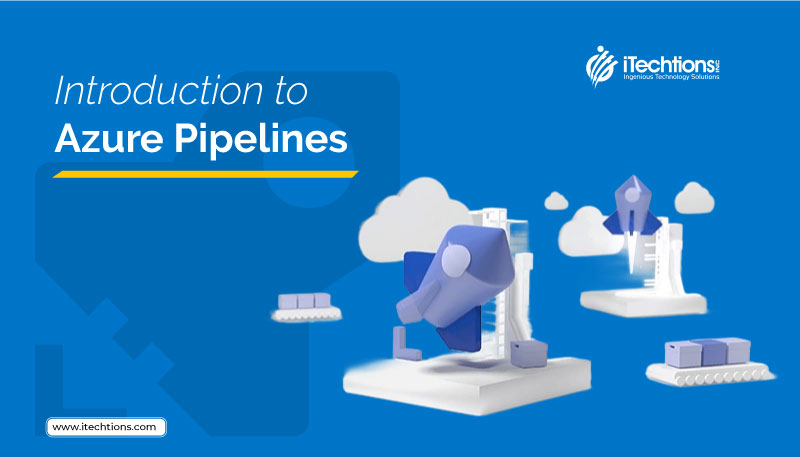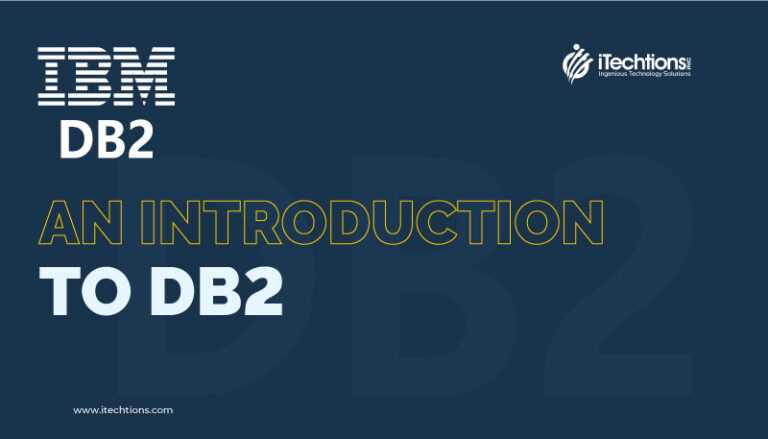Introduction
Azure Pipelines is a cloud service that plays a crucial role in automating the process of building, testing, and deploying code across different computing platforms. As a powerful tool based on the principles of continuous integration and continuous delivery (CI/CD), it ensures that code is consistently checked, built, and deployed. This service provides extensive support for various programming languages and application types, encompassing Java, JavaScript, Node.js, Python, .Net, C++, and Xcode, among others. One of the notable features of Azure Pipelines is its ability to integrate seamlessly with popular version control systems such as GitHub, Azure Repos, Bitbucket, and Subversion. By effectively merging these capabilities, Azure Pipelines grants developers with a convenient and automated way to deliver top-grade code to multiple targets, ranging from container registries and virtual machines, to a whole array of Azure services, as well as on-premises or cloud-based targets. In essence, Azure Pipelines leverages the cloud infrastructure provided by Azure to facilitate the automation of code build and testing processes, ensuring an efficient and streamlined software development lifecycle.
Functionality of Azure Pipelines
Azure Pipelines is a powerful cloud service provided by Azure that offers a comprehensive set of features and functionalities for automating the development and deployment processes. One of its key capabilities is enabling continuous integration (CI) and continuous delivery (CD) workflows.
With Azure Pipelines, developers can seamlessly integrate their codebase with popular version control systems such as GitHub, GitHub Enterprise, Azure Repos Git & TFVC, Bitbucket Cloud, and Subversion. By connecting to these repositories, Azure Pipelines can automatically trigger builds and tests whenever changes are made to the codebase. This ensures that the code is consistently checked and validated, leading to early detection of issues and smoother collaboration among team members.
In addition to CI/CD, Azure Pipelines supports a wide range of programming languages and application types. Whether you are working with Java, JavaScript, Python, .Net, C++, PHP, or any other language, Azure Pipelines has got you covered. The service provides a variety of pre-built templates and tasks that can be easily customized to suit your specific project requirements. This flexibility allows developers to build and test their applications seamlessly, regardless of their preferred language or framework.
Furthermore, Azure Pipelines offers a diverse set of deployment options for delivering code to various targets. Developers can utilize the service to seamlessly deploy their applications to container registries, virtual machines, and Azure services. This means that whether you are aiming to deploy your code as a containerized application, a traditional virtual machine, or leveraging Azure services, Azure Pipelines can effortlessly handle the deployment process for you. The service also supports both on-premises and cloud targets, giving developers the ability to deploy their code to a wide range of environments.
By leveraging Azure Pipelines, developers can significantly streamline their development process and reduce the time and effort required for building, testing, and deploying applications. The service’s extensive functionality, support for multiple languages, and ability to deploy code to various targets make it a versatile and robust solution for automating the development and deployment workflows. Whether you are a small startup or a large enterprise, Azure Pipelines can provide you with the tools and capabilities needed to ensure the efficient delivery of high-quality software.
Integration with Version Control Systems
Azure Pipelines supports integration with popular version control systems like GitHub, Git, TFVC, Bitbucket Cloud, and Subversion. This wide range of supported systems enables developers to seamlessly connect their code repositories to Azure Pipelines and automate their build and testing processes.
For developers using GitHub, Azure Pipelines allows them to effortlessly set up continuous integration and continuous delivery workflows. They can trigger builds and tests automatically whenever changes are pushed to their repositories, ensuring that code is rigorously tested before being deployed.
Similarly, Azure Repos Git and TFVC, both provided by Azure DevOps, can be easily integrated with Azure Pipelines. Developers using these version control systems can leverage the seamless integration to automate their build and deployment processes. TFVC, a centralized version control system, and Git, a distributed version control system, are both supported, giving developers flexibility based on their organizational preferences.
Bitbucket Cloud, another popular version control system, is also supported by Azure Pipelines. Developers can leverage Azure Pipelines to automatically build and test their code stored in Bitbucket repositories, ensuring the quality of their deliverables.
Additionally, Azure Pipelines supports integration with Subversion, a widely used version control system. This support enables developers using Subversion to automate their build and test processes, allowing for better control and efficiency in their software development lifecycle.
The ability to integrate with different version control systems is crucial for organizations as it allows developers to work with their preferred tools and methodologies. By providing support for these widely used systems, Azure Pipelines ensures that developers can easily incorporate the service into their existing workflows without any hassle.
In conclusion, Azure Pipelines offers seamless integration with popular version control systems like GitHub, Git, TFVC, Bitbucket Cloud, and Subversion. This integration enables developers to automate their build and testing processes, ensuring code quality and streamlining their software development lifecycle.
Advantages of using Azure Pipelines
- Consistent and high-quality code
One of the key advantages of using Azure Pipelines is its ability to ensure consistent and
high-quality code. By automating the building and testing processes, Azure Pipelines eliminates the risk of human error and ensures that code is thoroughly checked for bugs, vulnerabilities, and other issues. This leads to a higher level of code quality and reduces the likelihood of introducing new bugs or issues with each release. Moreover, Azure Pipelines allows developers to define and enforce coding standards, ensuring that the codebase follows best practices and remains maintainable in the long run. With consistent and high-quality code, development teams can build robust and reliable applications, enhancing user experience and minimizing downtime.
- Support for multiple languages and application types
Another advantage of Azure Pipelines is its extensive support for a wide range of programming languages and application types. Whether you’re developing a Java web application, a Python data processing pipeline, or a .NET desktop application, Azure Pipelines has got you covered. This flexibility enables development teams to leverage their preferred programming languages and frameworks, allowing them to work with familiar tools and libraries. Additionally, Azure Pipelines can seamlessly integrate with popular development platforms, such as GitHub, Bitbucket, and Azure DevOps, making it easy to incorporate existing repositories and workflows into the pipeline. By supporting multiple languages and application types, Azure Pipelines empowers developers to work efficiently and deliver high-quality software.
- Ability to deploy to various targets
Azure Pipelines offers the ability to deploy code to a variety of targets, making it a versatile solution for application deployment. Whether you want to deploy to container registries, virtual machines, Azure services, or on-premises and cloud platforms, Azure Pipelines has the necessary capabilities. This flexibility allows development teams to choose the target platform that best suits their application’s requirements and infrastructure. With Azure Pipelines, you can seamlessly integrate with Azure Kubernetes Service (AKS) for containerized deployments, Azure Virtual Machines for traditional application deployments, or any other desired target. By providing deployment support for various targets, Azure Pipelines simplifies the process of deploying applications and enables teams to deliver their software to multiple environments with ease.
In conclusion, Azure Pipelines offers a range of advantages that make it an indispensable tool for any development team. With its ability to ensure consistent and high-quality code, support for multiple languages and application types, and the ability to deploy to various targets, Azure Pipelines streamlines the development and deployment processes, saving time and effort for developers. By automating key tasks and providing a platform-agnostic solution, Azure
Pipelines empowers teams to build and deliver software more efficiently, leading to better outcomes and a more satisfied user base.
Additional Use Cases and Examples
- Collaboration on open-source projects
One of the key advantages of Azure Pipelines is its ability to facilitate collaboration on open-source projects. With its support for popular version control systems like GitHub,
developers can easily integrate Azure Pipelines into their open-source projects. This enables seamless collaboration between team members, regardless of their geographical locations. Team members can leverage Azure Pipelines to automate build and test processes, ensuring that all code contributions are thoroughly tested and integrated into the project. This not only improves the overall quality of the code but also enhances project transparency and fosters a sense of community within the open-source community.
- Working on any platform or language
Azure Pipelines offers broad support for a wide range of platforms and programming languages, making it a versatile solution for developers. Whether you are working on a Windows, macOS, or Linux system, Azure Pipelines can seamlessly integrate with your workflow. Similarly, whether you are developing applications in Python, Java, .NET, C++, or any other language, Azure Pipelines has you covered. This flexibility ensures that developers can leverage Azure Pipelines regardless of their platform and language preferences, making it a valuable tool for diverse development teams that work on multiple projects simultaneously.
- Incorporating Azure deployments
In addition to its CI/CD capabilities, Azure Pipelines seamlessly integrates with Azure deployments. This means that developers can utilize Azure Pipelines not only to build and test their code but also to deploy it directly to various Azure services. Whether it is deploying containerized applications to Azure Container Registries, virtual machines to Azure Virtual Machines, or cloud-native applications to Azure Kubernetes Service, Azure Pipelines provides a streamlined process for deploying applications to the Azure cloud. By combining the power of Azure Pipelines with Azure deployments, developers can automate the end-to-end process of building, testing, and deploying code, enabling faster and more efficient application delivery.
Final Thoughts
In conclusion, Azure Pipelines is a powerful cloud service that automates the process of building, testing, and deploying code across different platforms. With its support for various programming languages and integration with popular version control systems, developers can seamlessly incorporate Azure Pipelines into their workflows. The advantages of using Azure Pipelines include consistent and high-quality code, support for multiple languages and
application types, and the ability to deploy to diverse targets. Additionally, Azure Pipelines offers additional use cases and examples, such as collaboration on open-source projects, working on any platform or language, incorporating Azure deployments, and step-by-step guides for creating pipelines. Overall, Azure Pipelines streamlines the development and deployment processes, enabling teams to deliver high-quality software efficiently.









